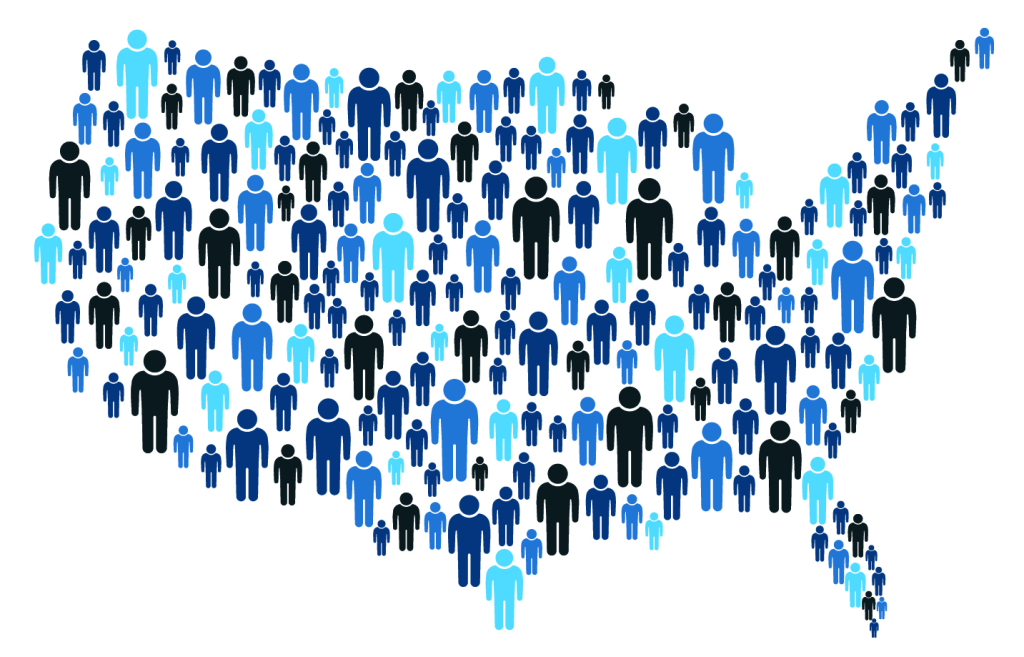
By WMBD-TV
ILLINOIS – Four years after the last census, almost a dozen small communities in the Midwest are going to be counted again in hopes of getting a new grocery store or more state funding to build roads, fire stations and parks.
Eleven small cities in Illinois and Iowa are the only municipalities so far to have signed agreements with the U.S. Census Bureau for a second count of their residents in 2024 and 2025, in a repeat of what happened during the 2020 census. The first year in which the special censuses can be conducted is 2024.
With one exception, city officials don’t think the numbers from the original count were inaccurate. It’s just that their populations have grown so fast in three years that officials believe they are leaving state funding for roads and other items on the table by not adding the extra growth to their population totals. Some also believe that new results from a second count will open up their community to new businesses by showing they have crossed a population threshold.
“We anticipate a significant increase in population from the special census, particularly given that we have had a record building-permit year,” said Marketa Oliver, city administrator for Bondurant, Iowa, a city of more than 8,700 residents in mid-2022, the last year figures are available, which is an 18% increase over the count in 2020.
Officials in Norwalk, Iowa, hope the second count shows the city has surpassed 15,000 people, since that is the threshold typically used as a rule of thumb in commercial real estate for when a community can support a business like a supermarket.
“Once a city hits 15,000, the market opens up tremendously,” said Luke Nelson, Norwalk’s city manager.
Unlike the 2020 census, the second counts won’t be used for redrawing political districts or determining how many congressional seats each state gets. Instead, they will be used to determine how much the communities will get in state funding that often is calculated by population size. Communities losing population in the past three years have nothing to worry about — their declining numbers won’t catch up with them until after the 2030 census.
Local, state and tribal governments across the U.S. have until May 2027 to ask for a special census from the Census Bureau. While the tab for the 2020 head count was picked up by the federal government, the local municipalities have to foot the bill for their special censuses. The cost isn’t cheap, ranging from just over $370,000 to almost $500,000 for the communities.
Some communities have already forged ahead with their own do-it-yourself recounts, unwilling to pay the price tag for a bureau-organized special census. Others have challenged their numbers with the Census Bureau and gotten small wins.
The cities in Iowa paying for a Census Bureau-run second count — Altoona, Bondurant, Grimes, Johnston, Norwalk, Pleasant Hill and Waukee — are fast-growing suburbs of Des Moines. The reason special censuses are so popular in Iowa is because the state uses the once-a-decade head count as the official population when it comes to funding based on population size, said Gary Krob, coordinator for the State Data Center at the State Library of Iowa.
Other states between censuses use annual population estimates for calculating how much funding local governments should get each year.
“That means the 2020 census population is currently the official count for every city and county in Iowa,” Krob said. “The only way to adjust your population count between now and 2030 is to conduct a special census with the Census Bureau and then have this new count certified by the Iowa Secretary of State.”
The geography of the Illinois cities and their reasons for seeking a second count — McDonough, Pingree Grove, Urbana and Warrenville — are a little more scattershot than in Iowa.
Officials in Warrenville, a suburb of Chicago with more than 13,500 residents in 2020, believe they can get an extra $1.2 million annually in federal and state funding, based on the calculation that they have added almost 1,000 new residents from several new housing developments.
The Village of Pingree Grove outside Chicago has experienced rapid growth, doubling from more than 4,500 residents in 2010 to more than 10,300 residents in 2020. Village officials believe there will be 12,300 residents in 2024, so the special census is needed to bring in an increased share of state revenues, “versus waiting another six years for the 2030 Census,” said Laura Ortega, the village clerk.
University of Illinois students make up about half the population of the college town of Urbana and city officials maintain the 2020 census missed a lot of them.
During the 2020 census, places with large numbers of students emptied out as campuses shut down in-person classes because of the COVID-19 pandemic. Urbana’s expected modest population gain for the 2020 census ended up being a 7% decrease from the 2010 head count, with the largest decreases in student neighborhoods near campus, Mayor Diane Marlin said in an email.
The uncounted students are costing the city at least $500,000 to $750,000 annually in missing state and federal funding, the mayor said. The 2024 count in Urbana will be limited to neighborhoods that saw the biggest decreases.
“If we recapture our population through a more accurate count, we recapture lost revenue,” Marlin said.
WMBD-TV can be reached at [email protected].






